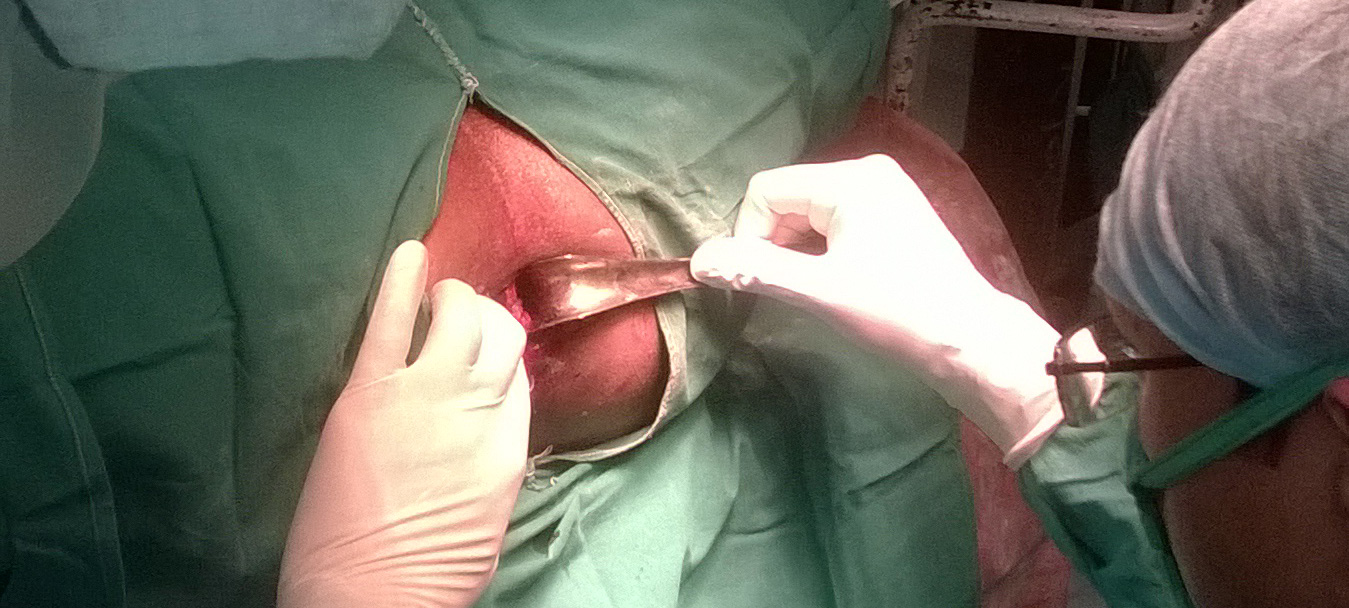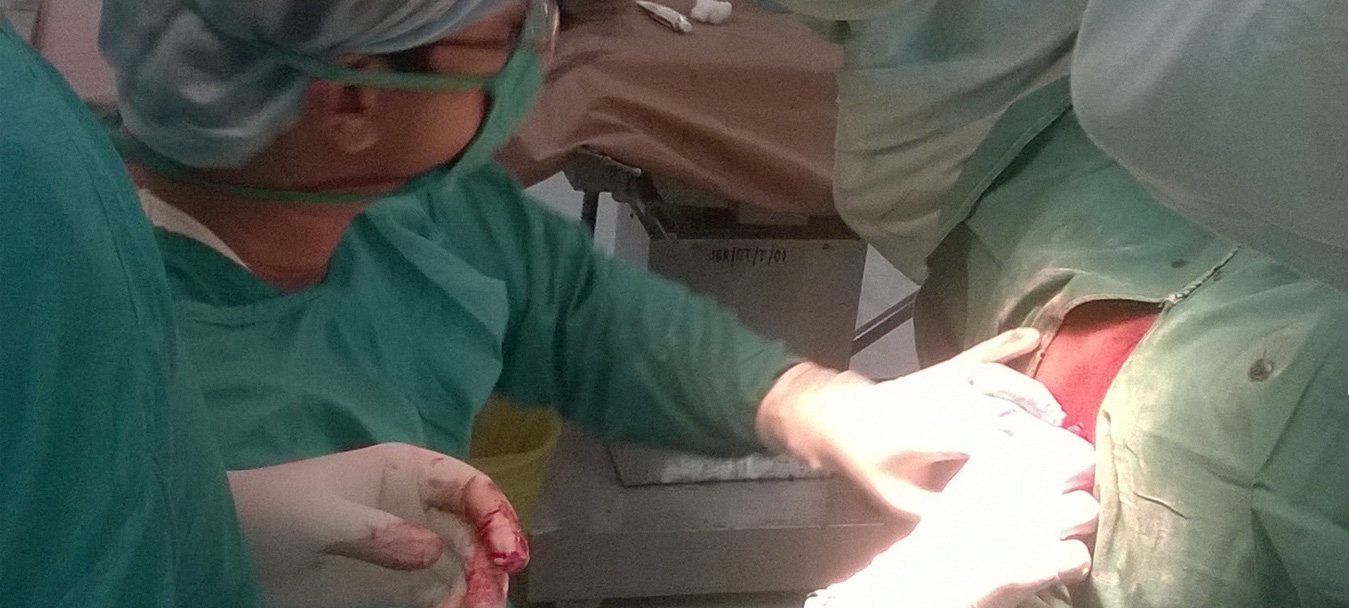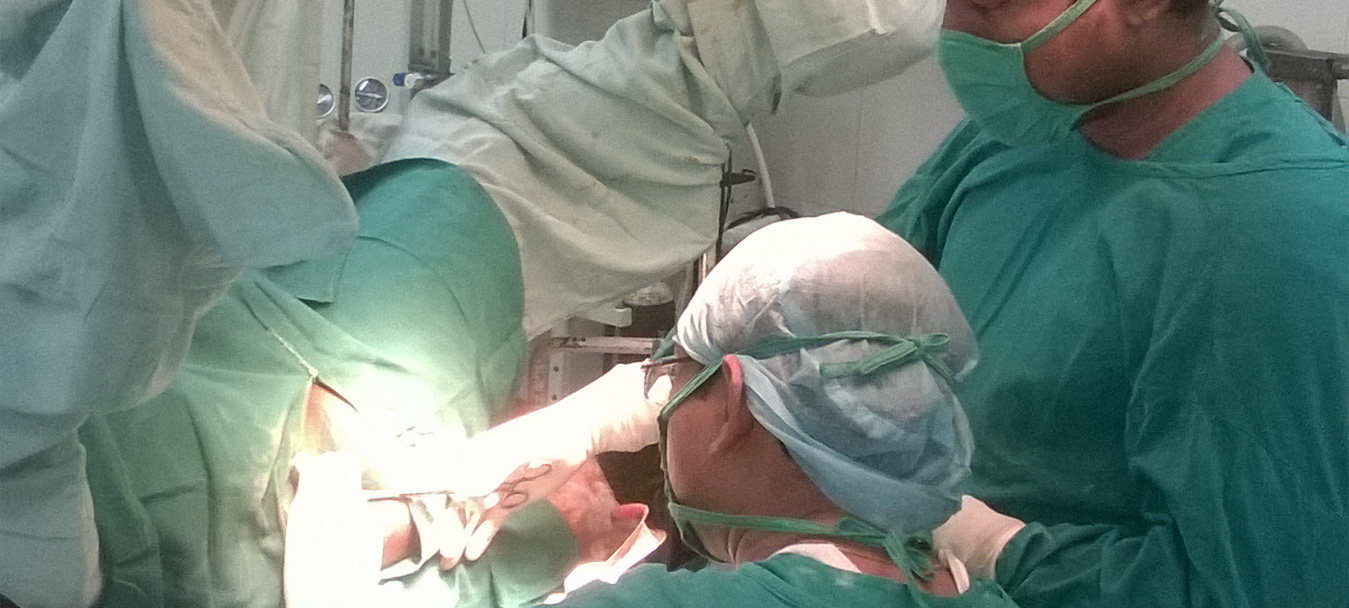Anal Fistula (Fistula-in-ano) |
| |
Is anaesthesia required for Ksharasutra procedure ? |
| |
Yes, for ano-rectal surgeries spinal or general anaesthesia is required; rarely small fistulae and external piles are operated under local anaesthesia. Pilo- nidal sinus and ganglion can be commonly operated under local infiltration anaesthesia.
|
| |
Is hospitalization required in surgery with Ksharasutra ? |
| |
| It depends on type of anaesthesia and surgery. For all surgeries performed under spinal or general anaesthesia hospitalization is required. Patients undergoing surgeries performed under local anaesthesia are discharged on the same day. |
| |
How long hospitalization is required ? |
| |
| For piles and anal fissure surgery a hospital stay of 3-5 days is required; for primary threading in anal fistula the patient is discharged within 48 hours after surgery. In anal fistula patient needs to attend hospital for changing of ksharasutra on regular basis at an interval of 3 or 7 days. For changing of thread hospitalization is not required. This changing of thread continues for several weeks depending on the length of the fistula tract and condition of the patient. Study shows the fistula tract is cut at the rate of 0.5cm/week. So if one has a tract of 5cm, 10+ weeks are required to cut the tract. |
| |
Is changing of Ksharasutra a painful procedure ? |
| |
| During the initial days, this procedure is a bit painful which can be managed by local fomentation, application of medicines and / or local anaesthesia. Gradually, the pain sensation decreases during successive changings. |
| |
What are the investigations done here ? |
| |
| |
- Inquiry about the problem is conducted by the surgeon.
- Inspection of the area of the disease.
- If required, per rectal examination using his finger may be done.
- Investigations like Probing, Proctoscopy, Colonoscopy, Sinography, CT Scan, MRI, Biopsy, Pus culture etc. are conducted as per requirement.
- Routine blood investigations, ECG, X-rays are often prescribed for anaesthetic and surgical fitness.
|
|
| |
What are the Merits of Ksharasutra theraphy in anal fistula ?
|
| |
| |
- Very less incidence of recurrence.
- least chance of post surgery stool incontinence.
- Minimal invasive surgery.
- Minimum blood loss.
- Cutting of tract and its healing goes on simultaneously.
- Can be performed in elderly patients
- Can be performed in diabetic patients
- Less hospital stay
- Patient can continue normal life after a sitting of Ksharasutra change
|
|
| |
What are the Demerits of Ksharasutra therapy in anal fistula ? |
| |
| |
- Treatment continues for several weeks.
- Discontinuation of treatment by patient due to improper understanding of subject and lack of motivation.
|
|
| |
Is there any guarantee that anal fistula will never recur after Ksharasutra
therapy ? |
| |
| No such guarantee. Recurrence rate has been reported in studies; but it is negligible in comparison to conventional fistulectomy. For further information |
| |
| |
|
Piles / Haemorrhoids |
| |
What is External piles ? |
| |
| |
- External haemorrhoids originate below the dentate line. They are bulging around the anal verge, very painful when inflamed, sometimes itchy.
|
|
| |
What is Internal piles ? |
| |
| |
- Internal haemorrhoids originate above the dentate line. They bleed very often.
|
|
| |
What are the degrees of haemorrhoids ? |
| |
There are four degrees of internal haemorrhoids :
|
| |
- First degree: No prolapse
- Second degree: Prolapse on straining and reduce spontaneously
- Third degree: Prolapse on straining, manually reducible
- Fourth degree: Parmanently prolapsed, can not be reduced manually
|
|
| |
| |
- There is no such classification of external haemorrhoids
|
|
| |
Is surgery the only treatment of piles ? |
| |
| |
- No.
- Primarily, various Ayurvedic medicinal treatments are advised to stop bleeding. Ksharakarma (local application of alkaline herbal paste) is often advised to shrink the first and second degree internal piles masses.
- The third and fourth degree haemorrhoids are ligated with ksharasutra.
|
|
| |
Is anaesthesia required for ksharasutra ligation ?
|
| |
| |
- Yes, any type of surgical intervention causing anal dilation requires suitable anaesthesia. Commonly, these surgeries are performed under saddle block anaesthesia. External skin tags can be removed under local anaesthesia.
|
|
| |
Is anaesthesia required for ksharakarma (local application of alkaline herbal
paste) ?
|
| |
| |
- No. Ksharakarma does not require any anaesthesia. A slit proctoscope is inserted and the paste is applied with care.
|
|
| |
Is hospitalization required for ksharasutra treatment ? |
| |
| |
- Ksharasutra ligation performed under saddle block requires hospitalization. The period of hospitalization may vary from 24 hours to 72 hours. The procedure performed under local anaesthesia may be discharged on same day.
- Ksharakarma is performed on day care basis.
|
|
| |
How does ksharasutra ligation work ? |
| |
| |
- Strangulation of haemorrhoidal mass causes ischaemic necrosis. The kshara in the thread causes sclerosis of local tissue.
|
|
| |
How does ksharakarma work ? |
| |
| |
- Kshara being sclerosing agent causes sclerosis of the local tissue.
|
|
| |
Is there any guarantee that piles will never recur after treatment with
ksharasutra ? |
| |
| |
- No such guarantee, but the incidence of recurrence is less as it cuts the swollen mass as well as sclerose the local tissue.
|
|
| |
| |
|
Anal Fissure (Fissure-in-ano) |
| |
How anal fissure is diagnosed ? |
| |
| |
- Mostly clinically, the surgeon will examine the local part.
- He may try to perform digital rectal examination to assess sphincteric tone.
|
|
| |
Is surgery the only treatment for anal fissure ? |
| |
| |
- No.
- Anal fissure is mostly treated with diet, activities and wide range of Ayurvedic medicines in acute condition.
- Chronic fissured should preferably be treated with surgery to avoid complication like formation of perianal abscess and anal fistula. Where surgery is otherwise contra-indicated long standing Ayurvedic treatment is required.
|
|
| |
What is the role of ksharasutra in treatment of anal fissure ? |
| |
| The role of ksharasutra in treatment of anal fissure is not defined. |
| |
| |
|
Pilo Nidal Sinus |
| |
How pilo-nidal sinus is diagnosed ? |
| |
| |
- Mostly clinically.
- Investigations like sinography, x-ray of lumbo-sacral spine are often advised to evaluate the extent of the tract and to exclude any underlying pathology of vertebral coloumn.
|
|
| |
What type of anaesthesia is required for this surgery ? |
| |
| Primary threading and changing of thread are usually performed under local anaesthesia. In some cases general anaesthesia is required. |
| |
How long the treatment continues ? |
| |
| The objective of the treatment in pilo-nidal sinus with ksharasutra is to facilitate drainage of pus and collected discharge and to promote granulation at the base of the ulcer. The treatment continues as long as the wound is completely healed up. |
| |
What are the merit of ksharasutra therapy in pilo-nidal sinus ? |
| |
| |
- Minimally invasive procedure.
- Less chance of recurrence.
- Treated on day-care basis.
|
|
| |
| |
|
| Sitz bath |
| |
What is Sitz bath ? |
| |
| A sitz bath (also called a hip bath) is a type of bath in which only the hips and buttocks are soaked in water. Its name comes from the German word “sitzenbad”. “sitzen,” meaning “to sit” and “bad” means “bath.” |
| |
How Sitz bath is taken ? |
| |
| 3-4 inches of water is taken in a plastic tub of optimum size. One should sit in such way that the perineum (the space between the anus and vulva or scrotum) and buttock are dipped into the water. The legs willremain outside the tub. The special device which fits into the toilet bowl is also used for this purpose. |
| |
What will be the quality of water ? |
| |
| Water may be lukewarm or cold. Follow your doctor’s advice. |
| |
How much time one shouId sit in ? |
| |
| 10-15 minutes for 3-4 times/day or as per your doctor’s advice. |
| |
What are the risk factors ? |
| |
| |
- Very little risk of harm.
- Wound infection may occur if the plastic tub is not cleaned properly.
- Some individuals may experience sweating and vertigo during sitz bath, they should immediately discontinue the bath and take rest in horizontal position in a comfortably cold and airy room for a while and consult a doctor.
|
|
| |
Precautions |
| |
| |
- Check the heat of water before sitting.
- Do not take a sitz bath in a hot, humid and stuffy room.
- Always keep yourself accessible when you are taking sitz bath. Do not sit in a locked room.
- Cleanse the tub properly before and after sitz bath.
|
|
| |
| |
|


